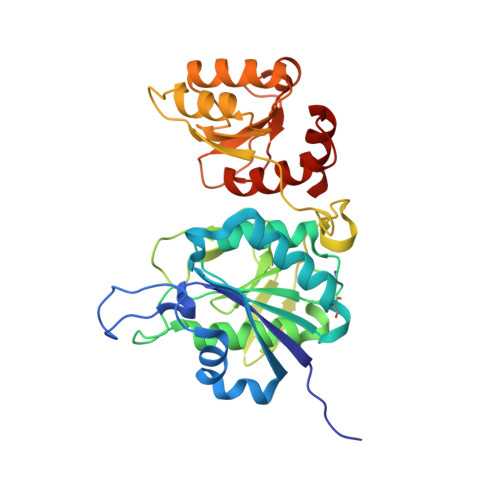Geometric considerations support the double-displacement catalytic mechanism of l-asparaginase.
Lubkowski, J., Wlodawer, A.(2019) Protein Sci 28: 1850-1864
- PubMed: 31423681
- DOI: https://doi.org/10.1002/pro.3709
- Primary Citation of Related Structures:
6PA2, 6PA3, 6PA4, 6PA5, 6PA6, 6PA8, 6PA9, 6PAA, 6PAB, 6PAC, 6PAE - PubMed Abstract:
Twenty crystal structures of the complexes of l-asparaginase with l-Asn, l-Asp, and succinic acid that are currently available in the Protein Data Bank, as well as 11 additional structures determined in the course of this project, were analyzed in order to establish the level of conservation of the geometric parameters describing interactions between the substrates and the active site of the enzymes. We found that such stereochemical relationships are highly conserved, regardless of the organism from which the enzyme was isolated, specific crystallization conditions, or the nature of the ligands. Analysis of the geometry of the interactions, including Bürgi-Dunitz and Flippin-Lodge angles, indicated that Thr12 (Escherichia coli asparaginase II numbering) is optimally placed to be the primary nucleophile in the most likely scenario utilizing a double-displacement mechanism, whereas catalysis through a single-displacement mechanism appears to be the least likely.
Organizational Affiliation:
Macromolecular Crystallography Laboratory, National Cancer Institute, Frederick, Maryland.

















